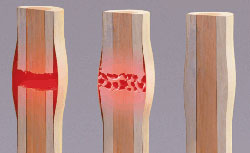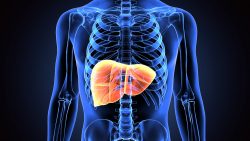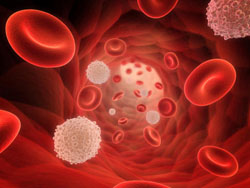Is 70 Years of Age is the New 60?

Is 70 the new 60? A new Stony Brook University-led study to be published in PLOS ONE uses new measures of aging to scientifically illustrate that one’s actual age is not necessarily the best measure of human aging itself, but rather aging should be based on the number of years people are likely to live in a given country in the 21st Century.
The study combines the new measures of aging with probabilistic projections from the United Nations and predicts an end to population aging in the U.S. and other countries before the end of the century. Population aging when the median age rises in a country because of increasing life expectancy and lower fertility rates is a concern for countries because of the perception that population aging leads to declining numbers of working age people and additional social burdens.
According to Warren Sanderson, Professor of Economics at Stony Brook University and the lead author, this study’s projections imply that as life expectancies increase people are generally healthier with better cognition at older ages and countries can adjust public policies appropriately as to population aging.
Population aging could peak by 2040 in Germany and by 2070 in China, according to the study, which combines measures of aging with probabilistic population projections from the UN. In the USA, the study shows very little population aging at all in the coming century.
Traditional population projections categorize “old age” as a simple cutoff at age 65. But as life expectancies have increased, so too have the years that people remain healthy, active, and productive. In the last decade, IIASA researchers have published a large body of research showing that the very boundary of “old age” should shift with changes in life expectancy, and have introduced new measures of aging that are based on population characteristics, giving a more comprehensive view of population aging.
The study combines these new measures with UN probabilistic population projections to produce a new set of age structure projections for four countries: China, Germany, Iran, and the USA.
“Both of these demographic techniques are relatively new, and together they give us a very different, and more nuanced picture of what the future of aging might look like,” says Professor Sanderson, also a researcher at IIASA. He wrote the article with Sergei Scherbov, leader of the Re-Aging Project at IIASA, and Patrick Gerland, chief of the mortality section of the Population Division of the United Nations.
One of the measures used in the paper looks at life expectancy as well as years lived to adjust the definition of old age. Probabilistic projections produce a range of thousands of potential scenarios, so that they can show a range of possibilities of aging outcomes.
For China, Germany, and the USA, the study showed that population aging would peak and begin declining well before the end of the century. Iran, which had an extremely rapid fall in fertility rate in the last 20 years, has an unstable age distribution and the results for the country were highly uncertain.
“We chose these four countries for analysis because they have very different population structures and projections, and so they allow us to test this methodology across a range of possible scenarios,” summarizes Scherbov.
Abstract: “We merge two methodologies, prospective measures of population aging and probabilistic population forecasts. We compare the speed of change and variability in forecasts of the old age dependency ratio and the prospective old age dependency ratio as well as the same comparison for the median age and the prospective median age. While conventional measures of population aging are computed on the basis of the number of years people have already lived, prospective measures are computed also taking account of the expected number of years they have left to live. Those remaining life expectancies change over time and differ from place to place. We compare the probabilistic distributions of the conventional and prospective measures using examples from China, Germany, Iran, and the United States. The changes over time and the variability of the prospective indicators are smaller than those that are observed in the conventional ones. A wide variety of new results emerge from the combination of methodologies. For example, for Germany, Iran, and the United States the likelihood that the prospective median age of the population in 2098 will be lower than it is today is close to 100 percent.”
Reference: Warren C. Sanderson, Sergei Scherbov, Patrick Gerland. Probabilistic population aging. PLOS ONE, 2017; 12 (6): e0179171 DOI: 10.1371/journal.pone.0179171







 Among all the organs in the human body, the liver is something of a superhero. Not only does it defend our bodies against the liquid toxins we regularly ingest, it has the ability to regenerate itself, and, as new research shows, it increases its size by nearly half over the course of a day.
Among all the organs in the human body, the liver is something of a superhero. Not only does it defend our bodies against the liquid toxins we regularly ingest, it has the ability to regenerate itself, and, as new research shows, it increases its size by nearly half over the course of a day.


